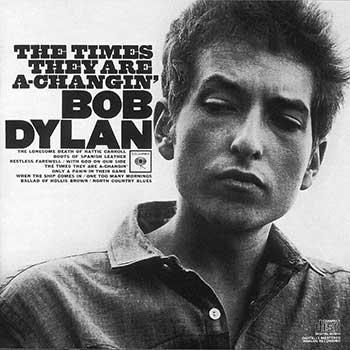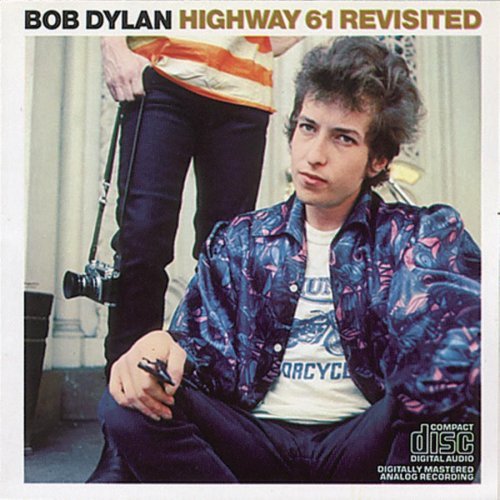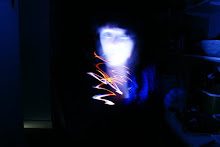This record label is amazing really: Columbia is the oldest surviving brand name in pre-recorded sound (founded in 1888). It went on to release records by plently of notable singers, instrumentalists and groups.
From 1961 to 1990, it's recordings were released outside the U.S. and Canada on the CBS Records label before adopting the Columbia name in most of the world.
Today it is a premier subsidiary label of Sony Music Entertainment.
Steve Barnett and Rick Rubin are the co-heads of Columbia Records.
It features artists I like signed to the label such as: David Bowie, Patti Smith, Bruce Springsteen & Bob Dylan.
It also features a catalogue of new artists such as: Calvin Harris, Beyoncé and MGMT.
What's nice about the label is the fact they still have their 'golden oldies' as the majority of them are still creating records:
- Bruce Springsteen latest release being 'Working on a Dream', his 16th studio album which was released at the beginning of this year.
http://www.youtube.com/watch?v=XtS78vUUzJo
- Patti Smith latest release being 'Twelve', a cover album which came out in 2007.
Patti Smith's cover of Nirvana's 'Smells like Teen Spirit'.
The album also includes covers of The Doors, Bob Dylan, REM and The Beatles.
albums;
Johnny Cash: The Fabulous Johnny Cash After making a name for himself on Sun Records, towards the end of his three-year contrac
 t Cash started saving his better new material. The results appeared on Fabulous, his Columbia debut, with five great Cash songs including “Frankie’s Man, Johnny,” “I Still Miss Someone,” “Don’t Take Your Guns to Town,” and “Pickin’ Time,” and mostly well-chosen covers. Among the latter are Dorothy Love Coates’s gospel favorite “That’s Enough,” proving that producer Don Law’s promise that Cash would have more freedom regarding his musical direction than Sun’s Sam Phillips had allowed. Aside from the Jordonaires’ syrupy backing vocals, Law kept the arrangements surprisingly stripped down for a major-label country album, only adding subtle drumming to Cash’s group The Tennessee Two (guitarist Luther Perkins and bassist Marshall Grant) and, very occasionally, light touches of steel guitar and piano. As a result, this record largely sounds timeless.
t Cash started saving his better new material. The results appeared on Fabulous, his Columbia debut, with five great Cash songs including “Frankie’s Man, Johnny,” “I Still Miss Someone,” “Don’t Take Your Guns to Town,” and “Pickin’ Time,” and mostly well-chosen covers. Among the latter are Dorothy Love Coates’s gospel favorite “That’s Enough,” proving that producer Don Law’s promise that Cash would have more freedom regarding his musical direction than Sun’s Sam Phillips had allowed. Aside from the Jordonaires’ syrupy backing vocals, Law kept the arrangements surprisingly stripped down for a major-label country album, only adding subtle drumming to Cash’s group The Tennessee Two (guitarist Luther Perkins and bassist Marshall Grant) and, very occasionally, light touches of steel guitar and piano. As a result, this record largely sounds timeless.
Bob Dylan: The Freewheelin' Bob Dylan Dylan’s second album opened eyes because it unleashed his superb songwriting on th
 e world with eleven brilliant, stylistically varied originals. For the socially conscious, it offered anti-war and pro-civil rights masterpieces: the acerbic “Masters of War” (arguably the most pointed anti-war song ever), the more philosophical “Blowin’ in the Wind,” the chilling “Oxford Town” (a then-topical look at an incident of racist violence in the Mississippi town of that name), and the poetic, dread-filled “A Hard Rain’s A-Gonna Fall.” Dylan’s off-the-cuff humor was on display in “Bob Dylan’s Blues,” the post-apocalytic “Bob Dylan’s Dream,” and “I Shall Be Free.” Even more biting wit comes in the kiss-off “Don’t Think Twice, It’s All Right.” “Down the Highway” offered Dylan’s take on raw blues. One of Dylan’s three best albums, this doesn’t have a weak track on it.
e world with eleven brilliant, stylistically varied originals. For the socially conscious, it offered anti-war and pro-civil rights masterpieces: the acerbic “Masters of War” (arguably the most pointed anti-war song ever), the more philosophical “Blowin’ in the Wind,” the chilling “Oxford Town” (a then-topical look at an incident of racist violence in the Mississippi town of that name), and the poetic, dread-filled “A Hard Rain’s A-Gonna Fall.” Dylan’s off-the-cuff humor was on display in “Bob Dylan’s Blues,” the post-apocalytic “Bob Dylan’s Dream,” and “I Shall Be Free.” Even more biting wit comes in the kiss-off “Don’t Think Twice, It’s All Right.” “Down the Highway” offered Dylan’s take on raw blues. One of Dylan’s three best albums, this doesn’t have a weak track on it.Bob Dylan: The Times They Are A-Changin' After the humor of the previous year's LP, this was a slap in the face, or a wake-up call: cold fury aimed at injustice and war. For all that, though, the raw, desolate sound of the album was more intimate lament than protest-song sing-along. Sam Cooke, among others, greatly admired the clarion call of the title track.
The Byrds: Mr. Tambourine Man and Turn! Turn! Turn!
The Byrds gave an American answer to the challenge of the Beatles with these two LPs, proving co-leader Gene Clark ("I'll Feel a Whole Lot Better," "Here Without You," She Don't Care About Time") a fine songwriter. But it
 was their #1 hit covers of Dylan (title track of the first album) and Pete Seeger (second album title track) that made the biggest waves, birthed folk-rock, and helped bring Dylan (five songs on the two albums) into the mainstream.
was their #1 hit covers of Dylan (title track of the first album) and Pete Seeger (second album title track) that made the biggest waves, birthed folk-rock, and helped bring Dylan (five songs on the two albums) into the mainstream.Bob Dylan: Bringing It All Back Home
This has a split personality: on side one, Dylan was controversially backed by a rock band, while side two returns to acoustic folk. Yet the songwriting was basic
 ally the same, and Dylan’s increasingly surreal lyrics were approaching new heights of inspiration. “Subterranean Homesick Blues,” was Dylan’s first Top 40 song, if barely (for one week at #39); its many memorable phrases (most famously, “You don’t need a weather man / To know which way the wind blows” and “Don’t follow leaders / watch the parking meters”) made a larger impact on the national consciousness than on the pop chart. Dylan’s meanings were becoming more allusive (and, for many, more elusive), but the song’s anti-establishment bent was nonetheless clear. The wild imagery of “Gates of Eden” was not folk music no matter how barebones the musical arrangement. This hit #6 on the album chart.
ally the same, and Dylan’s increasingly surreal lyrics were approaching new heights of inspiration. “Subterranean Homesick Blues,” was Dylan’s first Top 40 song, if barely (for one week at #39); its many memorable phrases (most famously, “You don’t need a weather man / To know which way the wind blows” and “Don’t follow leaders / watch the parking meters”) made a larger impact on the national consciousness than on the pop chart. Dylan’s meanings were becoming more allusive (and, for many, more elusive), but the song’s anti-establishment bent was nonetheless clear. The wild imagery of “Gates of Eden” was not folk music no matter how barebones the musical arrangement. This hit #6 on the album chart.Bob Dylan: Highway 61 Revisited
This reached #3 and changed rock history. With its lead track, “Like a Rolling Stone,” Dylan even neared the top of the singles chart himself; the song changed rock forever and made Dylan a mains
 tream figure. At over six minutes, it was twice the length of most pop singles, but so compelling and pivotal that many radio stations played it all anyway. Full-bore rockers (“Tombstone Blues,” “From a Buick 6,” and the title track’s devastating but hilarious critique of modern society), rollicking shuffles of explosive, caustic poetry (“It Takes a Lot to Laugh, It Takes a Train to Cry,” and the searing dissection of the befuddled bourgeousie “Ballad of a Thin Man”), the scruffily beautiful and nearly uncategorizable romantic plaint “Queen Jane Approximately,” the mysterious, evocative “Just Like Tom Thumb’s Blues”; all offer layers upon layers of meaning across a variety of sounds and moods, capped by the closing “Desolation Row,” an acoustic ten-verse epic that takes over 11 minutes to hop around two millennia while mix
tream figure. At over six minutes, it was twice the length of most pop singles, but so compelling and pivotal that many radio stations played it all anyway. Full-bore rockers (“Tombstone Blues,” “From a Buick 6,” and the title track’s devastating but hilarious critique of modern society), rollicking shuffles of explosive, caustic poetry (“It Takes a Lot to Laugh, It Takes a Train to Cry,” and the searing dissection of the befuddled bourgeousie “Ballad of a Thin Man”), the scruffily beautiful and nearly uncategorizable romantic plaint “Queen Jane Approximately,” the mysterious, evocative “Just Like Tom Thumb’s Blues”; all offer layers upon layers of meaning across a variety of sounds and moods, capped by the closing “Desolation Row,” an acoustic ten-verse epic that takes over 11 minutes to hop around two millennia while mix ing historical figures and characters from Shakespeare and the Bible in with Dylan’s.
ing historical figures and characters from Shakespeare and the Bible in with Dylan’s. Johnny Cash: Orange Blossom Special
Cash’s career took a surprising turn here with three covers of Dylan songs, most notably “It Ain’t Me, Babe,” which had made it to #4 on the Country singles chart in 1964 -- Dylan’s lyrics could speak to more demographics than expected. It presaged Cash’s turn to a more serious persona, though one that would always feature humor. The more traditional title track made it to #3.
A two-LP set when that was unheard of in rock, which shows how prolific Dylan’s inspiration was in this period, it reached #6 in spite of its greater expense. The amount of variety on it is dazzling, Dylan’s wordplay masterful, the music compelling in its loose exuberance. It opens with the deliberate, humorous chaos of “Rainy Day Women #12 & 35,” another #2 single, but also includes the personal and relatively straightforward “I Want You” (#20), finding Dylan sounding positively randy, and the tenderly perceptive yet unflinchingly detailed “Just Like a Woman” (#33), while a lot of songs suggest that the
 severe flux of his personal life was providing ample fodder for soong topics. There was room for ruminative epics (“Visions of Johanna” and the 11-minute relationship memoir “Sad Eyed Lady of the Lowlands”), poetic and playful wordplay (“Stuck Inside of Mobile with the Memphis Blues Again”), sharp-tongued blues (“Leopard-Skin Pill-Box Hat”), absurdist blues (“Obviously Believers”), the circusy “Most Likely You Go Your Way and I’ll Go Mine,” and much more on a 14-song album. Kooper returns to anchor the sound on organ, while Hawks lead guitarist Jaime (AKA Robbie) Robertson slips into the Mike Bloomfield role with some burning solos, and Nashville sessionmen have the time of their lives rocking with a country roll that makes it all fun to listen to.
severe flux of his personal life was providing ample fodder for soong topics. There was room for ruminative epics (“Visions of Johanna” and the 11-minute relationship memoir “Sad Eyed Lady of the Lowlands”), poetic and playful wordplay (“Stuck Inside of Mobile with the Memphis Blues Again”), sharp-tongued blues (“Leopard-Skin Pill-Box Hat”), absurdist blues (“Obviously Believers”), the circusy “Most Likely You Go Your Way and I’ll Go Mine,” and much more on a 14-song album. Kooper returns to anchor the sound on organ, while Hawks lead guitarist Jaime (AKA Robbie) Robertson slips into the Mike Bloomfield role with some burning solos, and Nashville sessionmen have the time of their lives rocking with a country roll that makes it all fun to listen to. Simon & Garfunkel: Sounds of Silence; Parsley, Sage, Rosemary and Thyme
Tom Wilson (the same Columbia producer who shaped Dylan’s “Like a Rolling Stone”) took a promising song from Simon & Garfunkel’s unsuccessful debut, the folkie Wednesday Morning, 3 AM, added electric backing under the duo’s vocals and acoustic guitar while they weren’t around, and got a hit single from it that became the title track of their next album, Sounds of Silence, released in January. It hit #1 on the  LP chart. Simon had been in England, where he had absorbed many influences, notably Jackson C. Frank (it’s obvious on Simon’s “Kathy’s Song”; Simon returned the favor by producing Frank’s debut LP) and Davy Graham (using the opening riff of Graham’s “Anji” for “Somewhere They Can’t Find Me,” then following it with a cover of “Anji” itself). Simon was also more literate (adapting an Edward Arlington Robinson poem for “Richard Cory”) than the average rocker, or folkie for that matter. So, while other folkies going electric drew on the Beatles, Simon had a different deck of cards to deal from. They all drew on Dylan, of course (Bob Johnston took over the LP’s production from Wilson, just as he had on Highway 61 Revisited); the organ on “I Am a Rock” is extremely reminiscent of Al Kooper’s contribution to “Like a Rolling Stone.” In October, S&G hit again with what I always think of as the herb album. Their success had earned them total control, and they became a bit less folk-rock, more art-folk-pop, as shown immediately by the harpsichord on "Scarborough Fair/Canticle" (the title track, sort of) and the way two songs are meshed in Ivesian fashion. There’s still Dylanesque organ and even wordplay (“The Big Bright Green Pleasure Machine,” “A Simple Desultory Philippic”), still British influence (“The 59th Street Bridge Song (Feelin’ Groovy)” is rather like skiffle with sophisticated production), and Simon once again wears his literary interests on his sleeve (“The Dangling Conversation”). Things occasionally teeter on the edge of pretension, but sheer beauty saves them.
LP chart. Simon had been in England, where he had absorbed many influences, notably Jackson C. Frank (it’s obvious on Simon’s “Kathy’s Song”; Simon returned the favor by producing Frank’s debut LP) and Davy Graham (using the opening riff of Graham’s “Anji” for “Somewhere They Can’t Find Me,” then following it with a cover of “Anji” itself). Simon was also more literate (adapting an Edward Arlington Robinson poem for “Richard Cory”) than the average rocker, or folkie for that matter. So, while other folkies going electric drew on the Beatles, Simon had a different deck of cards to deal from. They all drew on Dylan, of course (Bob Johnston took over the LP’s production from Wilson, just as he had on Highway 61 Revisited); the organ on “I Am a Rock” is extremely reminiscent of Al Kooper’s contribution to “Like a Rolling Stone.” In October, S&G hit again with what I always think of as the herb album. Their success had earned them total control, and they became a bit less folk-rock, more art-folk-pop, as shown immediately by the harpsichord on "Scarborough Fair/Canticle" (the title track, sort of) and the way two songs are meshed in Ivesian fashion. There’s still Dylanesque organ and even wordplay (“The Big Bright Green Pleasure Machine,” “A Simple Desultory Philippic”), still British influence (“The 59th Street Bridge Song (Feelin’ Groovy)” is rather like skiffle with sophisticated production), and Simon once again wears his literary interests on his sleeve (“The Dangling Conversation”). Things occasionally teeter on the edge of pretension, but sheer beauty saves them.







No comments:
Post a Comment